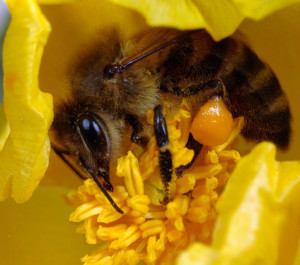 Recent research shows that fish are remarkably intelligent and have complex inner lives. This should not really be surprising since animals with very small brains that are much different than humans are now known to have advanced social and cognitive capacities—see posts on birds, lizards, bees, ants and termites. The intelligence of larger animals has been more obvious for some time—see posts on elephants, dogs, killer whales, octopus and dolphins. This post describes remarkable fish intelligence including complex social learning, communication, memory, personalities, pain, tool use, negotiating, consoling and punishing, play, dealing with distractions and math ability.
Recent research shows that fish are remarkably intelligent and have complex inner lives. This should not really be surprising since animals with very small brains that are much different than humans are now known to have advanced social and cognitive capacities—see posts on birds, lizards, bees, ants and termites. The intelligence of larger animals has been more obvious for some time—see posts on elephants, dogs, killer whales, octopus and dolphins. This post describes remarkable fish intelligence including complex social learning, communication, memory, personalities, pain, tool use, negotiating, consoling and punishing, play, dealing with distractions and math ability.
First a brief summary of the larger brain ocean species and then a brief summary of different types of small brains with advanced intelligence (sometimes greater than humans) using brains completely different than humans.
Large Brains in the Sea
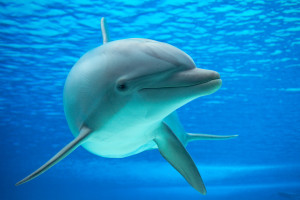 Killer whales use accurate communication to line up together, flap in unison creating waves to knock a seal off of ice and the precisely cut it up. Humpback whales compose new mating songs and these popular tunes then gradually spread east from Australia to French Polynesia.
Killer whales use accurate communication to line up together, flap in unison creating waves to knock a seal off of ice and the precisely cut it up. Humpback whales compose new mating songs and these popular tunes then gradually spread east from Australia to French Polynesia.
Dolphins show advanced intelligence including self-awareness of markings on their bodies, previously assumed to be present only in chimpanzees and humans. Dolphins use tools such as covering their noses with sponges. They communicate and cooperate for fishing with each other and with fishermen.
Octopus finds its way through a maze, solves advanced problems, spreads cultural information, and mimics others. They use their arms to carry shells, and then, in order to conceal themselves, they flip them over and hide underneath.
Intelligent Animals with Small Brains
 Brains of animals are different and aren’t smaller versions of human brains. Cooperation is not due to mammalian brain and didn’t necessarily drive human evolution. The current explanations of primate behavior aren’t supported. All of the behaviors observed in fish, aren’t supposed to happen without a mammalian brain. This is the same as lizards showing advanced social learning.
Brains of animals are different and aren’t smaller versions of human brains. Cooperation is not due to mammalian brain and didn’t necessarily drive human evolution. The current explanations of primate behavior aren’t supported. All of the behaviors observed in fish, aren’t supposed to happen without a mammalian brain. This is the same as lizards showing advanced social learning.
Birds
Birds mourn their lost colleagues and use vocal learning. They are given a life long name and taught particular songs, which they elaborate. Birds take gyroscope readings at takeoff and compare them to their home readings. Birds store thousands of seeds in different places and remember these for hours and months. Crows use analogies—solving higher-order and relational-matching tasks spontaneously. They build hooked stick tools very carefully observing each feature of the tool before use to make sure it can help with prey. When not using their tools, they hide them for future use. Crows understand that dropping stones in a water bottle connected with a tube raised the water level at a distance to get a floating piece of meat (Archimedes principle).
Birds use advanced perspective, understand other bird’s rank by observation, have very complex societies with shifting political alliances. Parrots understand sharing, relating actions in the near time to human’s future. Parrots use arithmetic and can invent meaningful words. Cockatoos perform five step puzzles rapidly.
Lizards
Reptiles show advanced social behavior with pair bonding, recognition of family and care of children. They demonstrate social learning, play behavior, and cooperation.
Anoles have demonstrated counting, advanced learning and problem solving. Anoles did even better than birds, including crows, learning extremely rapidly. They required less attempts in opening caps and remembered techniques, exactly, days later. They invented techniques that they don’t use in the wild. They were able to use multiple different strategies and could unlearn incorrect approaches rapidly reversing course.
Individual Bees
Bees use abstract concepts (above/below and difference), sequences, combinations, and symbolic language and have a kaleidoscopic memory for miles of detailed scenery. This memory includes individual flowers and detailed locations, such as their relationship to the sun. They can remember exactly where a better hive could be built and can describe it to their comrades.
Bees are able to solve the very advanced mathematical problem called the “Travelling Salesman Problem”—finding efficient routes between many different stops. Bees self medicate their hives, understanding where medicines are, how to mix them, and specifically when to apply them (with specific fungal infections in the hive). They build a honeycomb—the most efficient and the strongest way to store honey that has been conceived by human scientists.
Individual Ants
 Ants navigate long distances, find food, communicate and avoid predators. They care for their family similar to any mammal. Ants take advice from their more experienced brethren who had memorized alterative hive locations. Ants are led by the smartest of the group.
Ants navigate long distances, find food, communicate and avoid predators. They care for their family similar to any mammal. Ants take advice from their more experienced brethren who had memorized alterative hive locations. Ants are led by the smartest of the group.
Ants are altruistic and spend hours trying to help a comrade who is stuck, at great risk to themselves. Ants integrate many types of information for navigation—the number of steps, direction travelled, wind, land type, angle of the sun, visual memories of landmarks and smells. Individual ants can learn entirely new ways to navigate. Ants respond immediately to new situations. They adjust to different levels of threat and decide how aggressive they should be and how much energy should be used. Ants use multiple antibiotics in their farming of fungus for food. They inoculate the hive for mild illness (vaccinate) and isolate themselves voluntarily for serious illness.
Termites.
Termites engineering abilities are far beyond those of humans. Their structure is equivalent to a human skyscraper filled with advanced refrigeration and air quality control that humans couldn’t possibly build.
Fish Cooperation and Communication
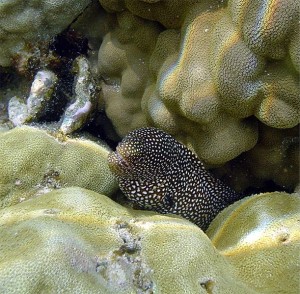
Surprisingly, three completely different species signal each other and cooperate to hunt. A grouper fish signals an eel with a head motion and a pointing headstand and the eel cooperates with the grouper to route prey that are in crevices too small for the grouper. The wrasse understands the sign language, also, and sucks out the prey or breaks the corral with powerful jaws from crevices. They all share their bounty. Cooperation among animals was observed before with monkeys. This type of behavior is contrary to simplistic interpretations of natural selection.
In experiments, the grouper fish learned rapidly to signal to an eel with special movements of the head. They only signaled those particular eels that were cooperative.
Negotiations
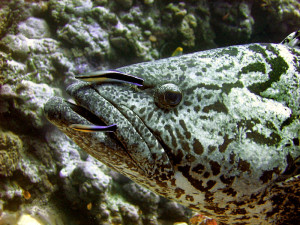
Another type of cooperation occurs in corral reels with larger predators who are cleaned of parasites by smaller fish that they might otherwise devour. The social relationships between the “cleaner fish” and the predators are very complex. One cleaner fish looked over 2300 fish in a day and ate 1200 parasites in that day. Those reefs without cleaner fish had a great amount more parasites.
Cleaner fish advertise with bright yellow and blue colors to become the associate and colleague of particular large predators that are either temporarily travelling through or more permanently near that particular reef. They create “cleaning stations” where the larger fish know they will be cleaned off. In this arrangement, the cleaner fish gets a great meal of parasites and the larger fish has the equivalent of a spa visit.
However, some of the cleaner fish try to cheat and take small bites out of the larger fish. The larger fish may then only go to other particular cleaner fish who will not do that. They may punish them by chasing them away. Once they have lost their business, cleaner fish are in trouble and others have the very useful relationship.
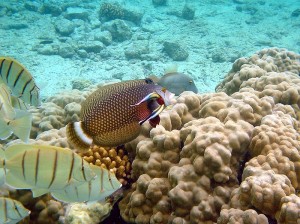
When other fish were observing them the cleaning fish cheated less often. And they especially tried to impress larger fish travelling through since they could pick and choose who would do their cleaning.
Some fish who had cheated and bitten their fish, then tried to make amends by using special massaging behavior. When male and female pairs worked together to clean a fish, then they cheat less, compared to those who work by themselves and aren’t observed. If the female doesn’t clean enough, then the male chases her until she cooperates and helps more. In experiments, where their food could be taken away, the fish learned to be much more cooperative in their cleaning.
This demonstrates that fish can cooperate, cheat, deceive, and console—all advanced social behavior.
Comparison Primates and Fish
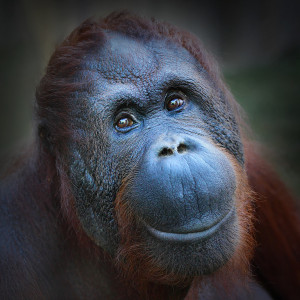 In a test of ability to find food, comparing fish with monkeys, chimpanzees and orangutans, they were given a temporary colored food and a permanent one. The fish immediately figured out that eating from the food that would only be there for a brief time would give them more food in the long run. They were much faster than all the primates. This performance of the fish is also better than young human children. When the colors were switched, the fish learned this faster also. This ability to reverse behavior was seen in the anole, and before that had been considered the test of high IQ of primates. The fish were better with a very small brain.
In a test of ability to find food, comparing fish with monkeys, chimpanzees and orangutans, they were given a temporary colored food and a permanent one. The fish immediately figured out that eating from the food that would only be there for a brief time would give them more food in the long run. They were much faster than all the primates. This performance of the fish is also better than young human children. When the colors were switched, the fish learned this faster also. This ability to reverse behavior was seen in the anole, and before that had been considered the test of high IQ of primates. The fish were better with a very small brain.
In areas where there are few fish and therefore less social pressures, they were not as smart on these tests as the fish nearby with more complex societies. But, of course, these fish didn’t need to develop these other behaviors to get plenty of food. Not training your dog doesn’t make her less intelligent.
Coral trout (like groupers) work in teams with eels by signaling with head gestures and headstands pointing to the prey. They size up situations and pick particular partners for different tasks. In comparison research, the fish did better at these tasks than chimpanzees, choosing collaborators faster. In research conditions, understood rapidly that they needed help to get the food. They picked the best collaborator as well as the chimps.
Vocal Language
Clownfish have a vocal language that establishes and defends their social position for breeding. Some of the sounds are aggressive signals along with fighting with another fish, and other sounds signified the fish that is dominated. The sounds of the dominant larger fish are different being longer and in a lower frequency. The largest in the group is female, and the second is male. All others in the group are neither gender. If something happens to the female, the ranking shifts and a new female and male are chosen by rank.
Fish Personalities
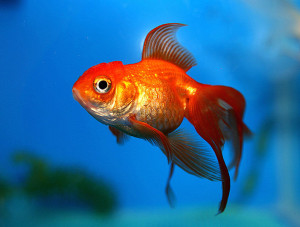
Many species show stable personalities such as crabs, squirrels, sheep, spiders and lizards. Fish show definite personalities and types of fishing are determined by these characteristics. Timid fish are caught in environments near rocks or vegetation At sea, more aggressive, bold fish are caught. More active young fish survive better. Fish personality differences include curiosity, gregarious and timid, and shy and bold.
Fun
Male cicklid fish play in individual ways. This is not aggression, is not for food and has individualisitic styles. They don’t do it with other fish species. A group played with a thermometer that was heavy on the bottom, and came back up to a standing position if pushed down. Three fish played with this in different ways, one hitting at the top and making it go down and back. Another hitting it at the bottom and moving it around the tank. And the third swimming around it and then hitting it.
Complex Courtship
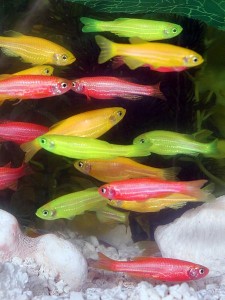
Many fish show complex courtship rituals both for the female and males. In one situation a female fish has her heart set on a particular male, but then observes him losing a battle with another fish. The brain regions for anxiety become very prominent and she doesn’t stay with the beaten fish.
Distractions
Fish process multiple objects at the same time. Ignoring distractions found in primates, pigeons and rats, and now in zebrafish. No matter how many different distractions are placed in an experiment, they rapidly found the target every time.
Fish Memory
African Cichlids have a great memory. They can remember associations and context for at least 12 days. After trained to go to a region of a tank to get food in three 20 minnute sessions, they remembered this after a 12 day break. They rapidly reversed this with different training.
Tools
 Tusk fish routinely use tools to smash open shells on an anvil to get the food inside. They hold them in their mouth and violently twists their head to pound the shell.
Tusk fish routinely use tools to smash open shells on an anvil to get the food inside. They hold them in their mouth and violently twists their head to pound the shell.
Now this ability has been found in many other fish, including wrasse.
Math Ability Versus College Students
A test of numerical approximation comparing fish and college students were surprisingly similar. The experiment used groups of objects to determine which is larger. The students approximated dots on a computer screen. Guppies were given the choice of two groups of fish. They are previously known to always choose larger groups. Both groups had the same results with an easier time comparing very different groups and a harder time with groups close in size.
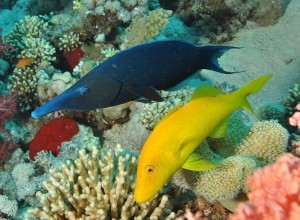 In reefs there are complex relations with many different creatures. In experiments wild fish were found to be very able to adapt to new tasks. They can rapidly distinguish between new colors, shapes, and patterns that they have never experienced before. For the experiment, damselfish learned to tap a disc of different characteristics and then food would come from a tube, when they were correct.
In reefs there are complex relations with many different creatures. In experiments wild fish were found to be very able to adapt to new tasks. They can rapidly distinguish between new colors, shapes, and patterns that they have never experienced before. For the experiment, damselfish learned to tap a disc of different characteristics and then food would come from a tube, when they were correct.
They were trained to tap for a particular shape, then many other shapes were presented and they rapidly learned to do the proper shape. They, also, tapped and then went to a distant location to receive the food accurately anticipating when and where they would receive the food. They were excellent at discrimination of colors.
Study showed that the larger the shoal of fish, the more accurate and rapid are decisions. Experiments included deciding to swim in near a predator or not. Individual fish were not as good at making these decisions. It appears that the communication is instantaneous in these groups. Individuals make decision, often by observing and reacting to neighbors. The larger shoals have particular fast decision makers that are then rapidly copied.
Fish Consciousness
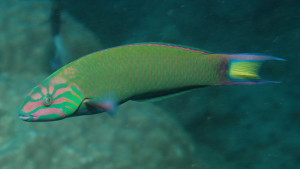
One measure of consciousness is the ability to infer a greater than b, b greater than c, therefore a greater than c. Cichlids observe fish a beating b and b beating c. Cichlids always attach the weaker of multiple opponents first and the experiment showed they had this power of inference. But, since there is no real definition of consciousness, scientist still claim fish have not been proven to be conscious.
Fish Feeling Pain
Previous posts described how crabs feel pain. But, what about fish? Fish have the same pain fibers as mammals and birds for trauma, pain and painful stimuli.
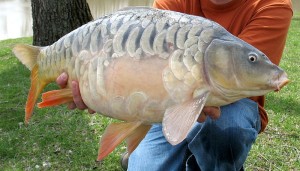 Experiments show that fish react to being hurt. They respond to relief from pain. Pain was measured by injecting trout faces with bee venom and vinegar. This was registered in pain receptors and the fish had increased breathing and stopped feeding for more than an hour. Lack of attention made them less fearful of an unusual object. A report showed that goldfish consciously experience pain, rather than a reflex reaction. The fish knew the spot where they had experienced the pain showing avoidance behavior.
Experiments show that fish react to being hurt. They respond to relief from pain. Pain was measured by injecting trout faces with bee venom and vinegar. This was registered in pain receptors and the fish had increased breathing and stopped feeding for more than an hour. Lack of attention made them less fearful of an unusual object. A report showed that goldfish consciously experience pain, rather than a reflex reaction. The fish knew the spot where they had experienced the pain showing avoidance behavior.
In the same way that people have begun to find more humane ways to treat land animals, the same must be considered for fish, such as barbless hooks and rapid return to the water of those that are not being kept. Suffocating on a boat is not as good as rapid electrical kills. The same protections that are given land animals, should be given to fish.
It is impossible to measure pain and human pain is very complex, with some feeling pain when there is no apparent reason and others not feeling pain when there is good reason. Pain, also, needs awareness and consciousness, which many scientists think fish and other animals with small brains don’t have. So, this concept has created much controversy. In fact, there is no adequate definition of awareness or consciousness. Human observers who don’t understand the stoic nature of animals raised separately misjudge the obvious pain experienced by farm animals.
Unusual Capacities of Electric Fish and Evolution
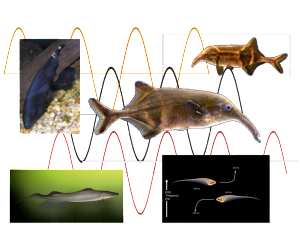
Electric eels use their current to kill prey. Weakly electric fish produce a small electrical field that they use to communicate and to understand their environment. They use the changes in voltage in the field to detect objects and other fish. They change the pitch when another fish arrives so that they have different pitches and they then communicate and signal each other with these signals.
With the electrical sense, hunting can be done without light while avoiding predators. The weakly electric fish can swim backwards at full speed and can rapidly switch between forward and backward in a fraction of a second. It has sensors in all parts of its body, which pick up the electric field produced by electric signals from the fish. It has a fin the length of his body, which ripples and allows rapid movement in all directions, including sideways and at angles. It is not clear whether the electric and swimming ability are connected.
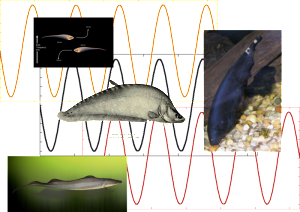
After the development of this new skill in evolution, more than 200 different species developed with particular types of electrical signals. These signals provide differences in the social hierarchy, and in individual identities. Fish are able to recognize each other from their specific types of electrical signals.
The electric signaling organ is at the base of the tail with rows of electrocytes. The many different cells fire producing a summation that is unique in each type of fish. They do not create waves, which travel and change. They create an electric potential and field, which is able to very accurately pick up the signals.
Specific receptors all over their body, knollenorgans, pick up the voltage changes and transmit this to the brain. The brain compares signals from both sides of the body. By comparing, they are able to pick up phase transitions and very accurate timed differences.
In evolution, this sensory organ in fish first developed to send out electric signals to study the environment, much like the sonar of bats. As their need to send and receive electrical information increased, the brain centers needed to use this sense grew dramatically. Over time, their brains grew larger, and a wide range of new species emerged that possessed the ability to produce and sense electrical signals. They then had more advanced communication. In humans using a particular mental ability builds neuronal regions. In fish the use of these electric abilities, also, built new brain regions.
Similar enhanced brain development has been recorded among mammals with a different sense. As smell and tactile sensitivity increased, mammals developed larger brains. 190 million years ago, one of the first mammals was tiny—but it had a much larger brain than its contemporaries, because of its enhanced smell centers.
Remarkable Fish Intelligence
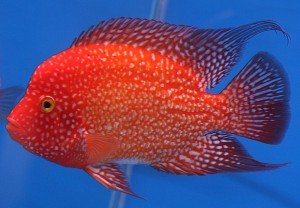
Small brained animals with structures different than humans have advanced intelligence. This includes birds, lizards, bees and ants. Current research shows advanced cognitive capacities of ordinary fish including complex social learning, communication, memory, personalities, pain, tool use, negotiating, consoling and punishing, play, dealing with distractions and math ability.
With advanced cognition in almost any animal species that is extensively researched, is it not reasonable to think that mind exists throughout nature?
